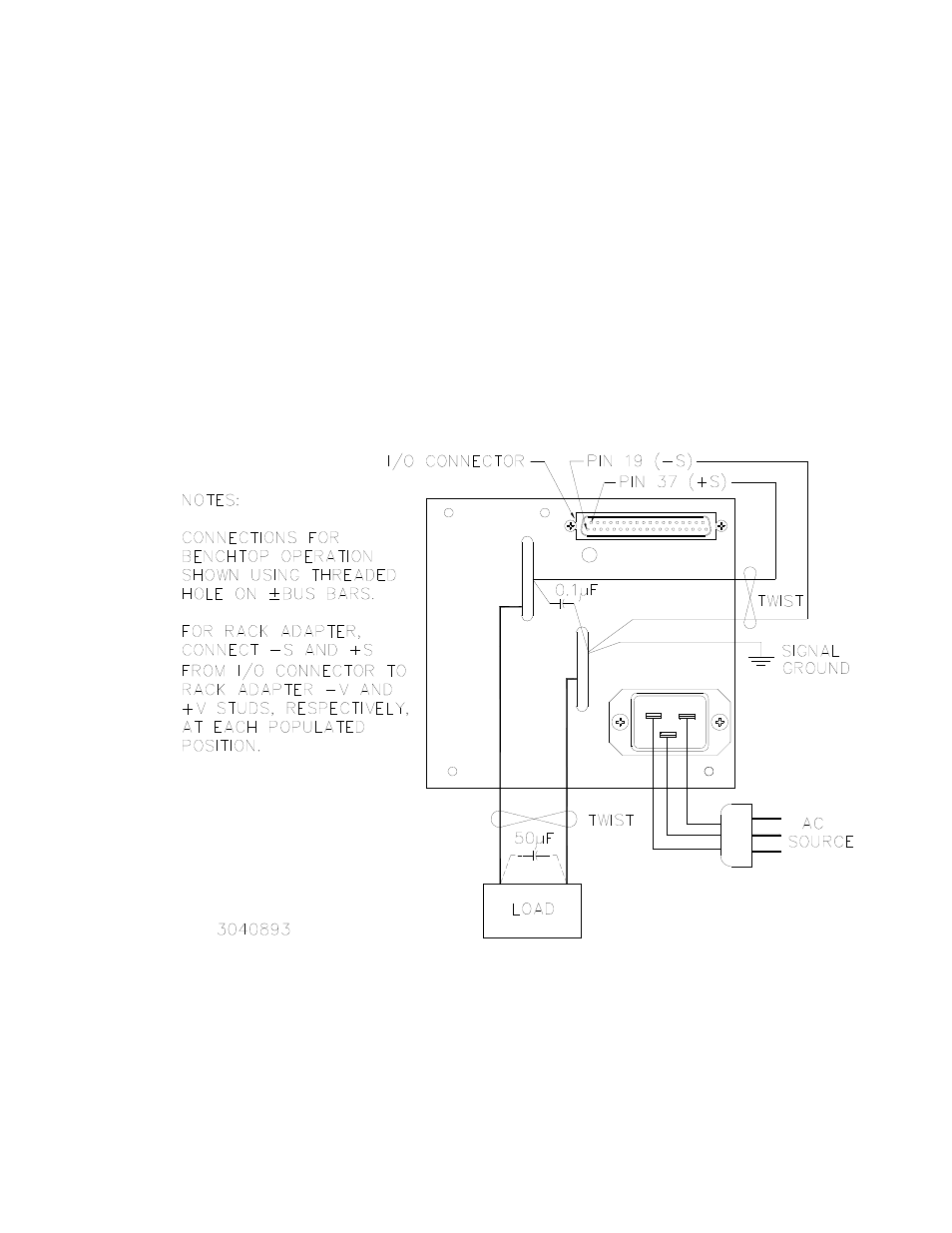1 load connection - method i (local error sensing), E 2-4 – KEPCO HSP Series Operator Manual User Manual
Page 21

HSPSERIES OPR 050614
2-7
2.7.5.1
LOAD CONNECTION - METHOD I (LOCAL ERROR SENSING)
The most basic power supply/load interface is a 2-wire connection between the power supply
output terminals and the load. This connection method employs local error sensing which con-
sists of connecting the error sense leads directly to the power supply's output terminals. Its main
virtue is simplicity: since voltage regulation is maintained at the power supply output, the regula-
tion loop is essentially unaffected by the impedances presented by the load interconnection
scheme. The main disadvantage is that it cannot compensate for losses introduced by the inter-
connection scheme and, therefore, regulation degrades directly as a function of distance and
load current. The main applications for this method are for powering primarily resistive and rela-
tively constant loads located close to the power supply, or for loads requiring stabilized current
exclusively. The load leads should be tightly twisted to reduce pick-up. See Figure 2-4.
FIGURE 2-4. LOAD CONNECTION - METHOD I (LOCAL ERROR SENSING)
